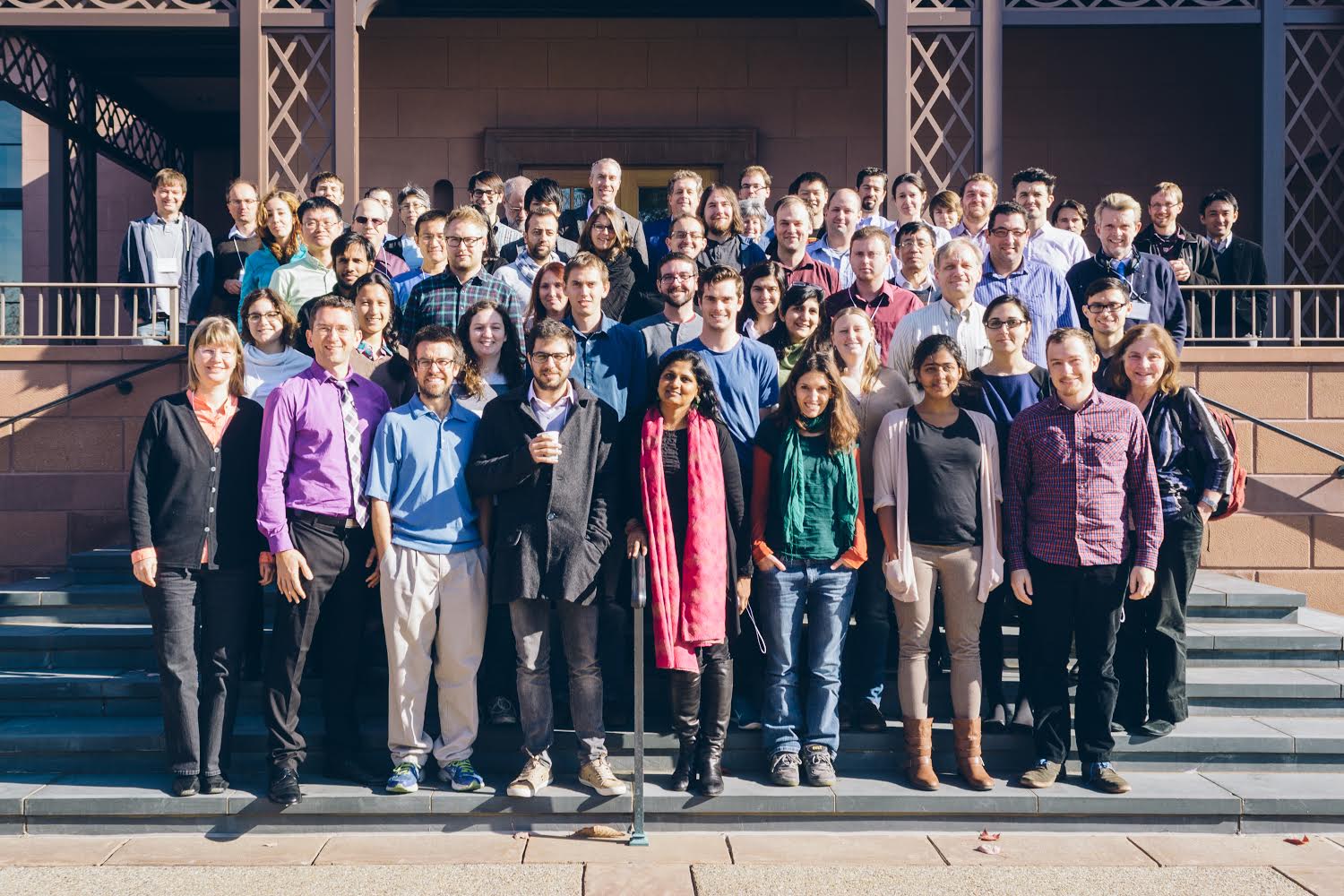
Galaxy cluster RX J1347.5-1145 observed with ALMA (blue) and HST (background)
The Sunyaev-Zel’dovich effect is this really really awesome process that allows us to see clusters of galaxies at all distances. It is going to be vastly important with all the fancy new submillimeter telescopes astronomers have built lately, such as the Atacama Large Millimeter Array (ALMA), the Sub-Millimeter Array (SMA) and the Atacama Cosmology Telescope (ACT). At its core, it’s a beautifully simple phenomenon, so let’s break it down.
About 10% of the mass of galaxy clusters is intra-cluster gas, not attached to any individual galaxy. To counter the strong gravitational potential of the dark matter with thermal pressure, the gas needs high temperatures of 1-100 million Kelvin. Gas this hot is best observed with X-ray telescopes.
Light from the cosmic microwave background (CMB) is coming at us from all directions. Since these photons started out ~13 billion light years away from us, when light and matter separated for the first time, they pass through plenty of galaxy clusters on their way to us. And when they hit the very hot electrons in the ionized intra-cluster gas, they get “upscattered” – that is to say, they get more energy, while the electrons cool down a tiny bit. This is called inverse Compton scattering; in regular Compton scattering, the photon would have been hotter than the electron, so the energy transfer would have gone the opposite way.
A photon Compton scatters against an electron, gaining some energy and sending the electron into a slight recoil.
The magnitude of cooling due to the SZ effect is:
where x = describes how this cooling depends on the rest frame frequency
that you observe. In words, it is the integral along the line of sight of the thermal pressure of the electrons normalised by the rest energy of electrons, all multiplied by the Thomson cross-section, which sets the scale of the photon-electron interaction. This quantity is called the SZ decrement.
Okay now are you ready for the coolest (IMHO) bit? Consider how the value of the SZ decrement varies with redshift/distance. Since the Universe was (1+z) times smaller in each dimension at a redshift z, the number density of a cluster with a given total number of electrons goes as:
Meanwhile, that line element dl that we’re integrating over can be written as:
where, is the angular diameter distance and
the luminosity distance. Following the same expansion argument as above, each of those dimensions was (1+z) times smaller, giving a total dependence of (1+z). So the intrinsic/rest frame SZ decrement increases with redshift as
.
Now the energy density from a source at redshift z decreases as due to cosmological expansion, plus a
fall-off in the frequency. This means that an object of a fixed luminosity L gets
times fainter with redshift.
The redshift dependences of the SZ decrement and fading due to distance exactly cancel out!
This means that given a mass of a cluster (and thus ), we can detect it with the SZ effect at every redshift ever. It’s a redshift-independent tracer of mass. It means that we can study the assembly history of massive objects in the Universe to as far out as we freaking want, as long as the temperature measurements are precise enough! And currently, they are enough to see anything upwards of about
.










